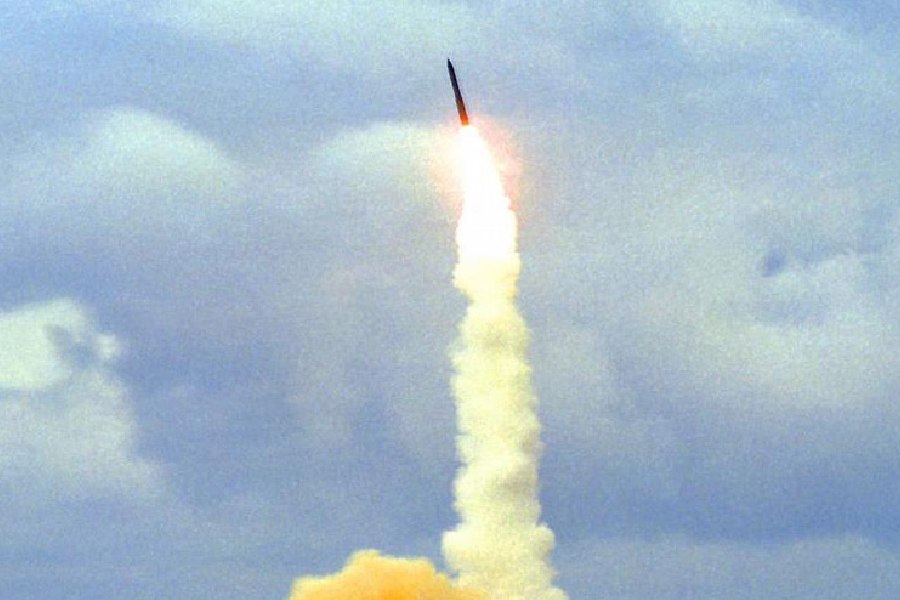China has flexed its military muscle with surface-to-air missile tests on the Karakoram Plateau, near the border with India. The tests took place even as diplomatic talks between India and China were ongoing, the South China Morning Post (SCMP) reported.
The test involved intercepting for the first time a subsonic cruise missile at slightly over 17,390ft. The test served as a demonstration of military prowess to show that China could bring down in harsh conditions the best missiles that India might have in its arsenal.
“The specific location of the test was not disclosed….but analysts say its proximity to the border suggested it was part of a deterrence strategy,” the SCMP said in its report.
China’s state media reported the missile intercept test on the same day that China and India held their 31st meeting on border affairs in Beijing, during which they agreed to strengthen dialogue and maintain peace along their border.
The SCMP quoted one Chinese analyst who said that China has been carrying out such weapons tests on the border plateau region ever since the 2020 Galwan clashes and border troubles with India.
“It carries a certain deterrent message. To avoid war, we must first possess the capability to fight,” Lin Minwang, deputy director, Fudan University’s Centre for South Asian Studies, told the SCMP.
Significantly, Minwang insisted that, “It is impossible for China to meet India’s demands,” even though he maintained that “both sides are intensifying efforts to reach an agreement on border issues as soon as possible.”
Minwang also issued a warning, saying that, "The test signifies to India that China possesses military capabilities… and the choice now lies with India."
Another Chinese military commentator, Song Zhongping, described the tests as a clear warning to India, calling the People’s Liberation Army (PLA) test a “guarantee of strength” to back China’s position in the talks.
Zhongping elaborated without mincing his words: “The goal was to intercept all incoming targets, whether they are subsonic or hypersonic [missiles]. Negotiations without that guarantee of strength are unlikely to produce results.”
Both sides have been issuing mixed statements about talks during the last few weeks. Zhang Xiaogang, a spokesman in the ministry of national defence, said late last week that India and China have been “able to reduce their differences and build some consensus besides agreeing to strengthen dialogue”.
However, there has been no indication whether China would allow the Indian Army to resume patrolling in areas like the Depsang Plains and Demchok where it had regularly patrolled until a few years ago.
The timing of the test amid ongoing dialogues between the two sides could prompt India to reassess its defence priorities and seek to build a more robust deterrent force including hypersonic missiles and long-range air-launched cruise missiles, regional analysts said.
External affairs minister S. Jaishankar struck an optimistic note in early September when he said in Geneva there was 75 per cent progress on the “disengagement” issues between the two countries relating to the disengagement of troops in Eastern Ladakh.
Jaishankar met his Chinese counterpart Wang Yi in July in Laos while attending ASEAN meetings. National security adviser Ajit Doval met the Chinese foreign minister in St Petersburg in early September. Both Doval and Wang are the special representatives for the India-China talks mechanism.
At the St Petersburg meeting, India’s foreign ministry said India and China had agreed to work with “urgency” and “redouble” their efforts to achieve complete disengagement in the remaining friction points in eastern Ladakh.
Wang stressed at the talks that “facing a turbulent world, China and India as two ancient eastern civilisations” should “choose unity and cooperation, and avoid consuming each other,” China’s state-run Xinhua news agency reported.
India insists that its ties with China cannot be normal unless there’s peace in the border areas. In the meantime, China has continued to strengthen its airfields and heliports in Ladakh and Tibet, enabling them to move troops to forward areas swiftly.











